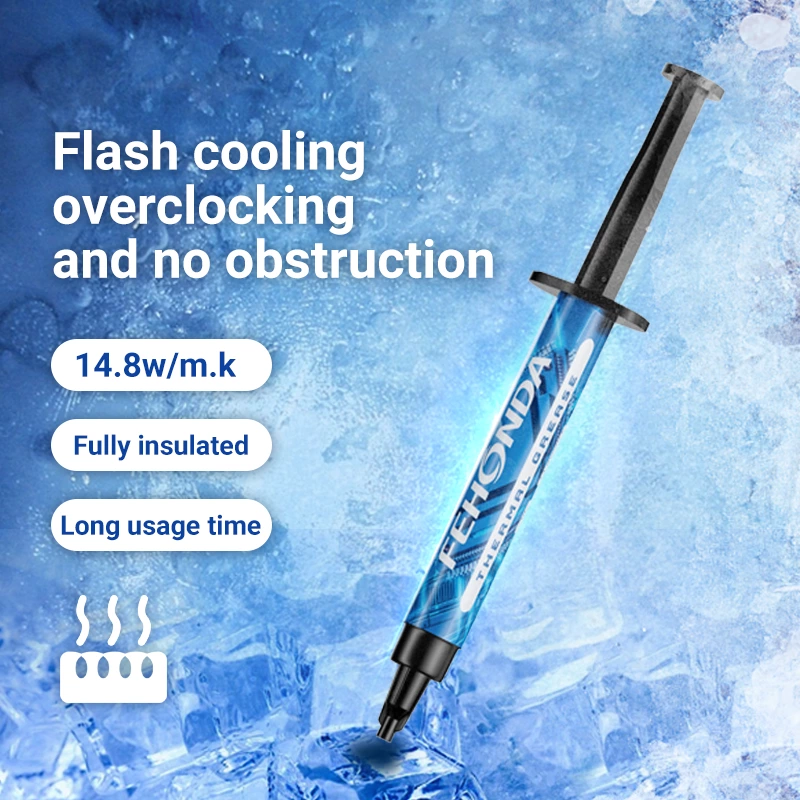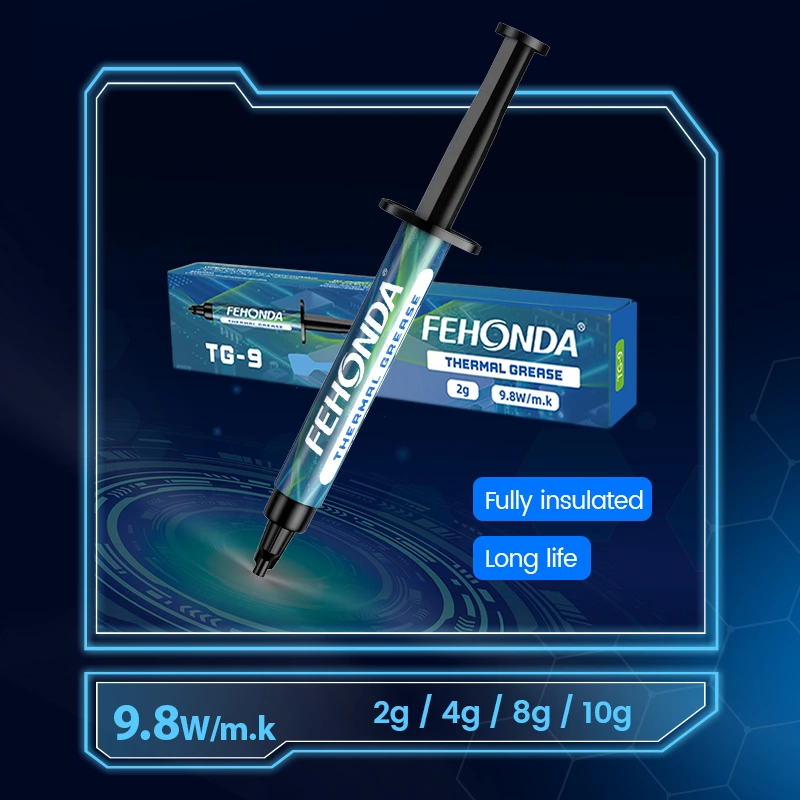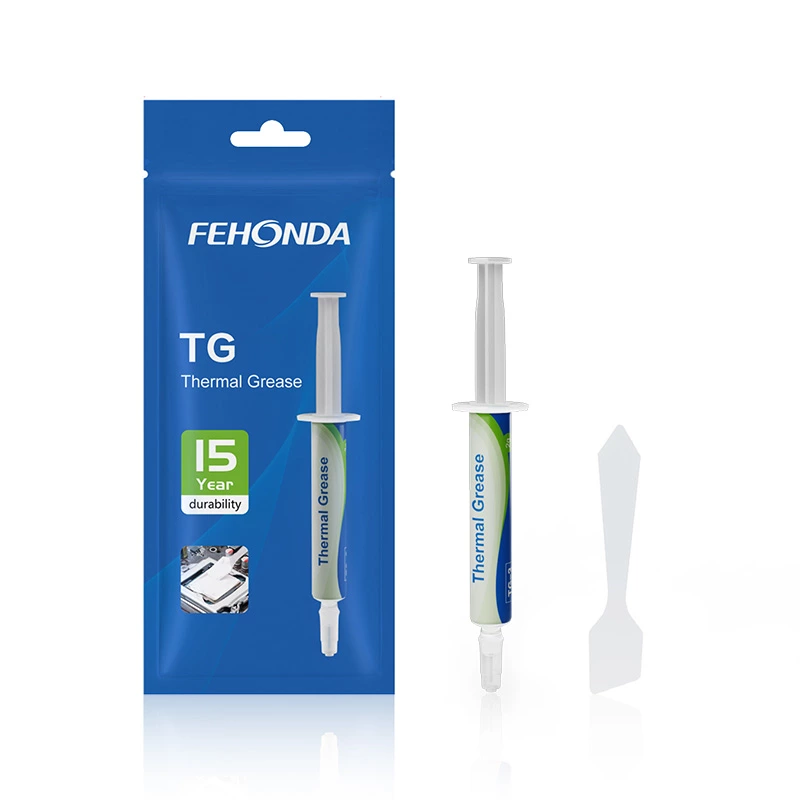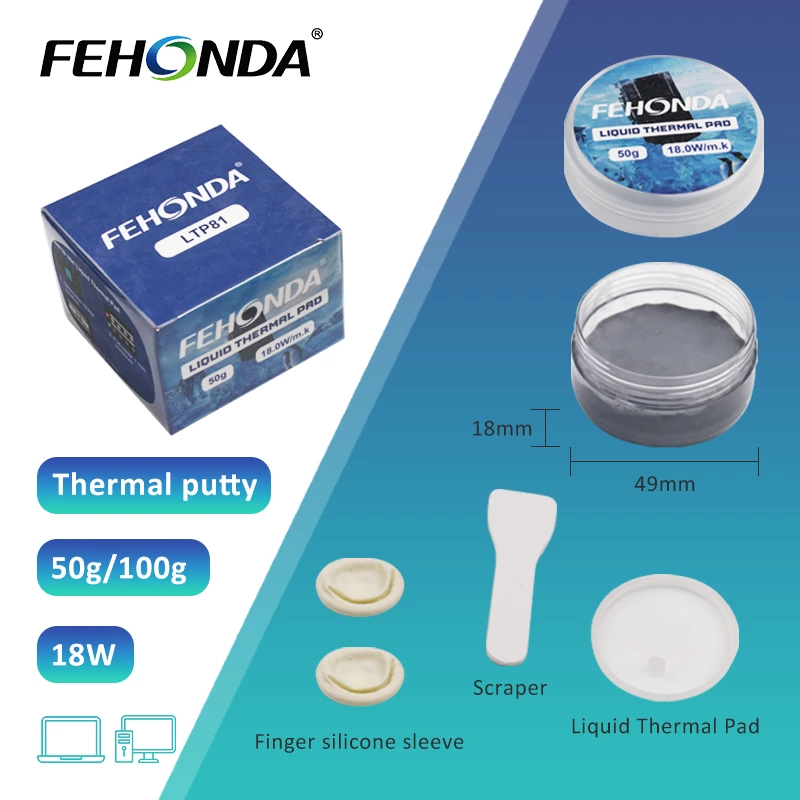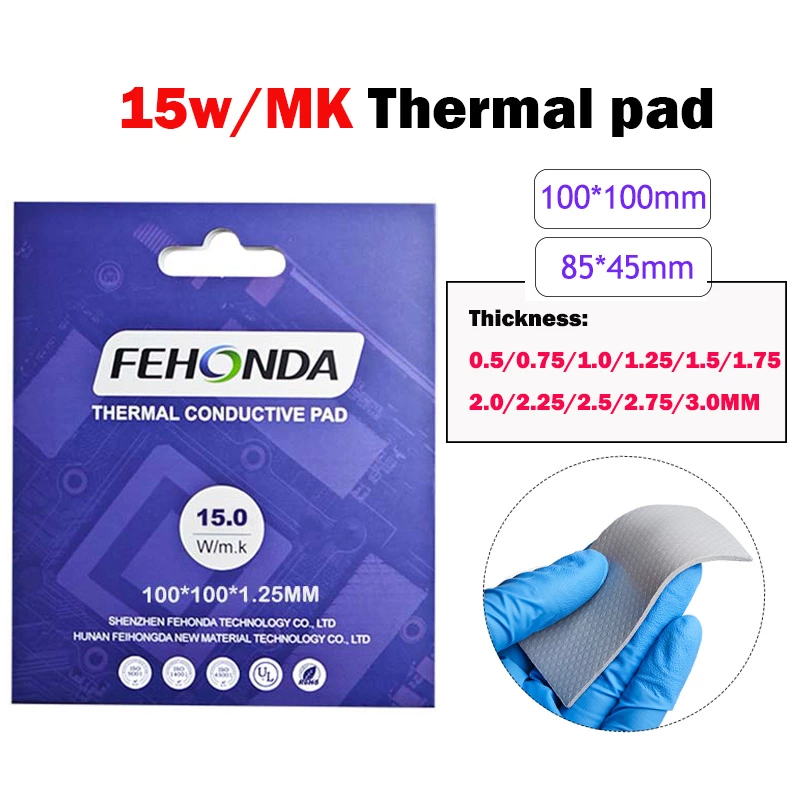Maintaining optimal operating temperatures is critical for the performance and lifespan of your Central Processing Unit (CPU). In the realm of thermal management, two prominent contenders for facilitating heat transfer between the CPU's Integrated Heat Spreader (IHS) and the cooler's baseplate are traditional thermal paste (thermal grease or compound) and phase change thermal pads
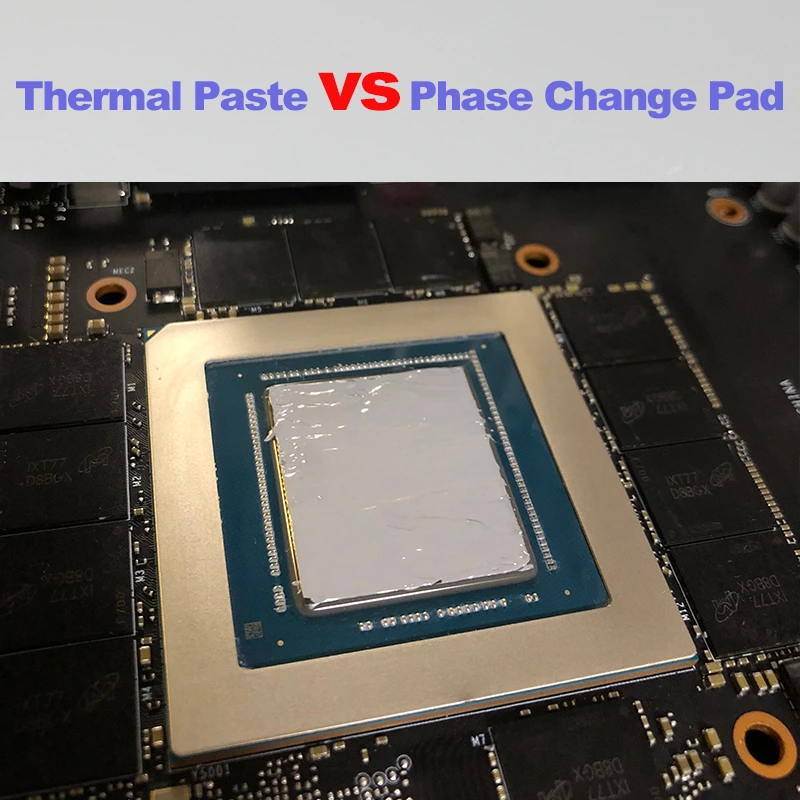
Thermal Paste vs Phase Change Thermal Pad for CPU Which is Superior? Expert Analysis
The Ultimate CPU Cooling Showdown: Thermal Paste vs. Phase Change Thermal Pads
While both serve the fundamental purpose of filling microscopic air gaps to enhance thermal conductivity, they operate on different principles and possess distinct characteristics. This comprehensive guide provides an in-depth comparison to help you determine which cooling solution is best suited for your specific CPU and computing demands.
Understanding the Fundamentals: Bridging the Thermal Interface
As previously established, the seemingly smooth surfaces of the CPU IHS and the cooler base exhibit microscopic irregularities. These imperfections trap air, a poor thermal conductor, hindering efficient heat transfer. Thermal interface materials (TIMs) are essential to displace this air and create a more thermally conductive pathway, allowing heat generated by the CPU to be effectively transferred to the cooler for dissipation.
Thermal Paste: The Established Champion of Thermal Conductivity
Thermal paste, a viscous compound, typically consists of a base material (silicone, carbon, or metal-based) infused with thermally conductive fillers (metal particles, ceramic powders, etc.). It is applied as a thin layer onto the CPU IHS before the cooler installation.
Advantages of Thermal Paste:
- Exceptional Thermal Conductivity: High-quality thermal pastes are renowned for their superior thermal conductivity compared to most thermal pads, including traditional silicone-based options. This translates to more efficient heat transfer and lower CPU operating temperatures, particularly under heavy loads and during overclocking.
- Optimal Surface Conformity: The fluid or semi-fluid nature of thermal paste allows it to perfectly conform to the microscopic contours of both the CPU IHS and the cooler base. This maximizes the contact area and minimizes the formation of insulating air pockets, leading to enhanced thermal performance.
- Thin and Customizable Application: When applied correctly, thermal paste forms an extremely thin layer, minimizing thermal resistance at the interface. Experienced users can fine-tune the application technique and thickness for optimal results.
- Wide Variety of Performance Tiers: The market offers a diverse range of thermal pastes catering to different performance requirements and budgets, from entry-level options to high-end compounds designed for extreme overclocking.
Disadvantages of Thermal Paste:
- Potentially Messy Application: Applying thermal paste can be a somewhat messy process, requiring careful technique to ensure even coverage and prevent spillage onto surrounding motherboard components.
- Risk of Electrical Conductivity (Certain Formulations): Some high-performance thermal pastes contain conductive metallic particles, posing a risk of short circuits if they come into contact with sensitive electronic components. Electrically non-conductive options are available but might not always offer the absolute peak thermal performance.
- Application Skill Required: Achieving optimal thermal transfer with thermal paste often necessitates a degree of skill and experience in applying the correct amount and ensuring uniform distribution.
- Single-Use Application: Once the cooler is removed, the applied thermal paste typically needs to be cleaned and reapplied, as the original spread will likely be disrupted and may not ensure optimal contact upon reinstallation.
- Pump-Out Phenomenon: Over extended periods, some thermal pastes can experience "pump-out," where thermal cycling and mounting pressure cause the paste to migrate away from the center of the IHS, potentially leading to reduced cooling efficiency. High-quality formulations aim to mitigate this effect.
Phase Change Thermal Pads: The Solid-to-Liquid Advantage
Phase change thermal pads represent a more advanced approach to thermal interfacing. At room temperature, they exist as a solid pad, offering ease of handling and installation similar to traditional thermal pads. However, as the CPU heats up to a specific activation temperature (typically around 45-60°C), the material undergoes a phase transition, softening and flowing to fill the microscopic gaps between the CPU and the cooler with exceptional conformity, much like thermal paste.
Advantages of Phase Change Thermal Pads:
- Excellent Thermal Conductivity (Once Activated): High-quality phase change thermal pads can achieve thermal conductivity levels that rival or even surpass some mid-to-high-range thermal pastes once they reach their activation temperature and fully conform to the mating surfaces.
- Ease of Application (Solid State): In their solid state at room temperature, phase change pads are easy to handle, position, and install, eliminating the mess and potential for improper spreading associated with thermal paste.
- Cleanliness: Similar to traditional thermal pads, phase change pads are generally cleaner to work with than thermal paste.
- Consistent Thickness and Pressure: The pre-cut nature of phase change pads ensures a consistent thickness and helps maintain even pressure distribution between the CPU and the cooler.
- Reduced Pump-Out Risk: Due to their unique phase change behavior and often more robust base materials, high-quality phase change pads tend to exhibit a lower risk of pump-out compared to some thermal pastes over extended thermal cycling.
- Potential for Reusability (Carefully): In some instances, if the cooler is removed and reinstalled without significant disturbance, a phase change pad might be reusable, although replacement is generally recommended for optimal performance.
Disadvantages of Phase Change Thermal Pads:
- Activation Time and Initial Performance: Phase change pads require the CPU to reach their activation temperature before they fully transition and achieve their optimal thermal performance. Initial cooling might not be as efficient as with a well-applied high-performance thermal paste during the initial warm-up phase.
- Temperature Dependency: Their performance is inherently temperature-dependent. If the CPU frequently operates below the activation temperature, the pad might not fully transition and achieve its advertised thermal conductivity.
- Potentially Higher Cost: High-performance phase change thermal pads can sometimes be more expensive than comparable high-end thermal pastes.
- Limited Thickness Options: The available thickness options for phase change pads might be less varied compared to the virtually limitless application thickness achievable with thermal paste.
- Degradation Over Multiple Phase Change Cycles (Potential): While generally durable, repeated heating and cooling cycles over a very long lifespan could potentially lead to some degradation of the phase change material in certain formulations. High-quality pads are designed to minimize this.
Key Considerations When Choosing Between Thermal Paste and Phase Change Thermal Pads:
To make an informed decision between thermal paste and phase change thermal pads for your CPU cooling needs, consider the following factors:
- Cooling Performance Requirements: For extreme overclocking and the absolute lowest possible temperatures under maximum load, high-end thermal paste still often holds a slight edge in ultimate thermal conductivity once properly applied. However, high-quality phase change pads are rapidly closing this gap and offer excellent performance once activated.
- Ease of Application and Mess Factor: Phase change pads offer a significantly cleaner and easier installation process compared to the potentially messy application of thermal paste.
- Long-Term Reliability and Maintenance: Phase change pads often exhibit better long-term reliability and a reduced risk of pump-out, potentially requiring less frequent reapplication compared to some thermal pastes.
- Budget: Consider your budget, as high-performance options for both thermal paste and phase change pads can vary in price.
- System Usage Patterns: If your CPU consistently operates at or above the activation temperature of the phase change pad, you can expect excellent performance. If your CPU frequently idles at lower temperatures, the initial performance might be a consideration.
- User Skill Level: Phase change pads are generally more forgiving in terms of installation compared to the precise application required for optimal thermal paste performance.
Our Expert Analysis:
The choice between high-quality thermal paste and phase change thermal pads for CPU cooling is becoming increasingly nuanced.
- For Enthusiasts and Overclockers Prioritizing Absolute Peak Performance: High-end thermal paste, when applied meticulously, may still offer a marginal advantage in ultimate thermal conductivity in some scenarios. However, the performance difference is shrinking.
- For Users Seeking a Balance of Excellent Performance and Ease of Use: High-quality phase change thermal pads offer a compelling alternative. They provide excellent thermal performance once activated, coupled with a cleaner and simpler installation process and potentially better long-term reliability due to reduced pump-out.
- For Mainstream Users and System Builders: Phase change thermal pads offer a robust and consistent cooling solution with ease of application, making them an attractive option.
Conclusion:
Both thermal paste and phase change thermal pads represent effective solutions for CPU cooling. While traditional thermal paste remains a strong contender for ultimate thermal performance, particularly in the realm of extreme overclocking, phase change thermal pads offer a compelling combination of excellent thermal conductivity (once activated), ease of application, and long-term reliability. As phase change technology continues to advance, they are becoming an increasingly attractive alternative for a wide range of users seeking high-performance cooling without the complexities associated with thermal paste application. Carefully consider your cooling requirements, budget, and desired level of installation simplicity to determine the optimal choice for your CPU.

